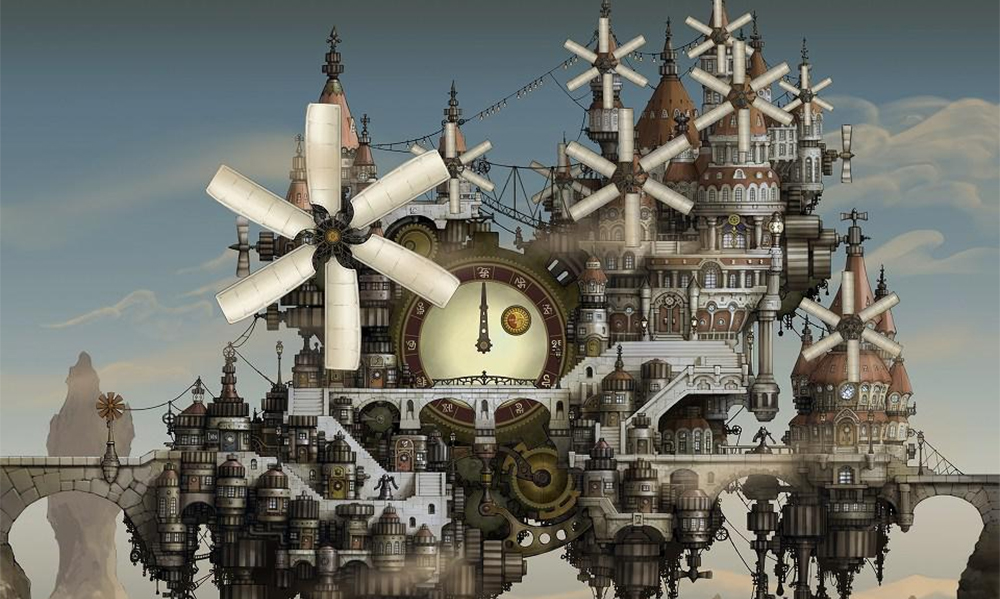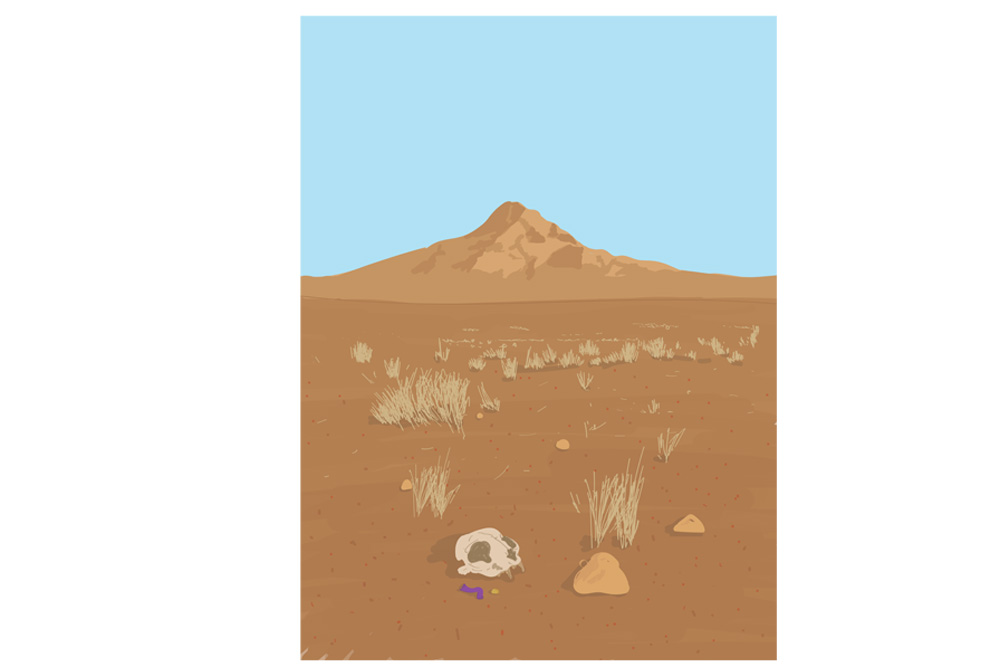When inspiration strikes Mandee Schroer, an aspiring visual artist and Portland State student, she doesn’t discriminate between plaster, paint and pencils. She just makes what her gut tells her to make. The forms she sculpts are loosely based on sites such as Pikes Peak in Colorado, Zion National Park in Utah, Mt.
Vague memories
When inspiration strikes Mandee Schroer, an aspiring visual artist and Portland State student, she doesn’t discriminate between plaster, paint and pencils. She just makes what her gut tells her to make. The forms she sculpts are loosely based on sites such as Pikes Peak in Colorado, Zion National Park in Utah, Mt. St. Helens in Washington and Crater Lake in Oregon. Some of the work emerges from a vague memory of the place.
Mandee Schroer’s work brings up questions of memory: What affect do natural sites have on our memory? In the act of remembering, as we reconstruct a visual chronicle from our experiences, both real and perceived, we come to understand a place from the inside out.
Schroer uses diverse media to express her relationship with places seen, imagined and somewhere in between. She has one of four relationships with a site of interest: as a precursor, an afterimage, a fleeting image and places she has partially experienced. She wonders what it takes to more fully experience these sites of natural awe, questioning the completeness of our awareness of a single moment in time.
A self-proclaimed, “last person who still believes in nature,” she chooses to extract lines and shapes from distant landscapes, expressing a fragment of their actual presence in nature. The pseudo-topographic lines in her paintings appear to trace elevations of the mind.
She loves inventing mental maps, suggesting a challenge Edward Casey has posed for contemporary artists: “What if a map were not about the earth in the conventional sense but about something belonging to the earth itself?” She relies on stories, conversations and personal vision more than photographs or sketches when she paints metaphysical maps.
For Schroer, the move from her home state of New Mexico to Oregon a year and a half ago was abrupt, but she soon became entranced by the grayness of the Pacific Northwest and embraced its palette in her work. The brighter colors of her earlier work in the Southwest have muted into subtle tones of pale blue and washed-out gray.
The New Mexican culture of her upbringing still surfaces in her content, which is evident in the piece currently on display at the MK Gallery. This work is titled, Messed up Stories, and is about Chicano folklore, myths and identity. The show closes this Friday, Feb. 23.
Her main influences include artists such as Cy Twombly, a painter who thoroughly expanded the visual syntax of stochastic gestures in the latter part of the 20th century. She also finds inspiration in the work of local artist Dan Atoe and is fascinated with Mama Anderson.
Kate Simmons, another student in the MFA program, thinks about Schroer’s relationship to landscape as, “a series of interweaving threads that form a fabric which clothes individual personas, behaviors and emotions.”
As she constructs her work in the studio, one gets the feeling of being in a lucid dream, in control and not in control at the same time.
Exploring the line between knowledge of natural sites in her own corporeal experience of the present moment, Schroer invents far more often than she depicts. A process of both knowing and unknowing enters into her studio as she builds work that overtly lacks concern with craft and technical aspects. Her work undergoes constant transformation: one day it’s a sculpture, and then the next day it gets disassembled and re-worked. With an acute sensitivity to materials, she trusts her instincts without relying on a protocol for how the pieces should be constructed.
For the viewer, Schroer’s particular sites may not contain any potency, but they still serve as ephemera in a larger schema of vague memories.
Master of Fine Arts Thesis ShowMK Gallery Art Building, second floorMay 15-25, 2007




